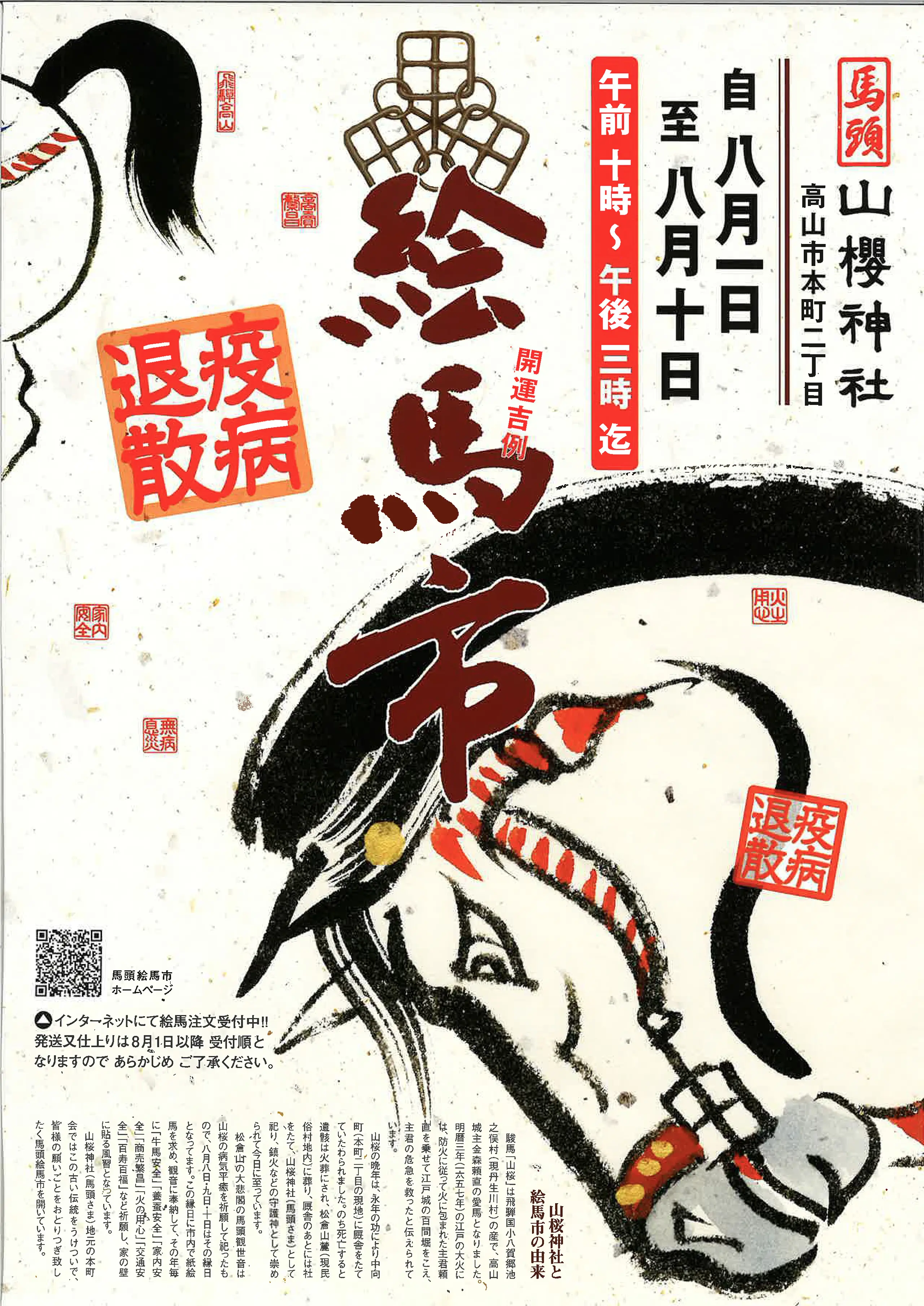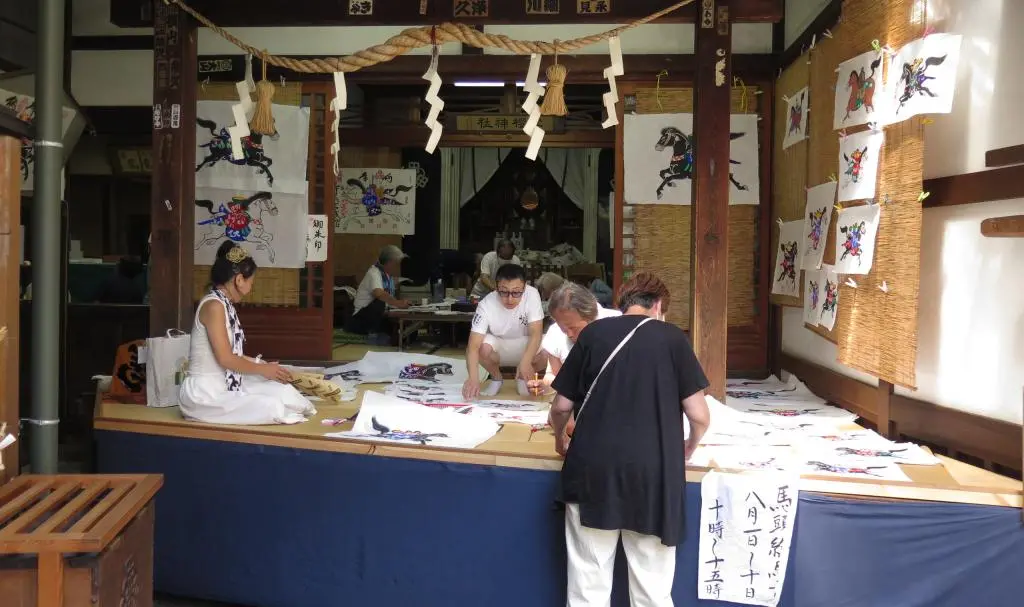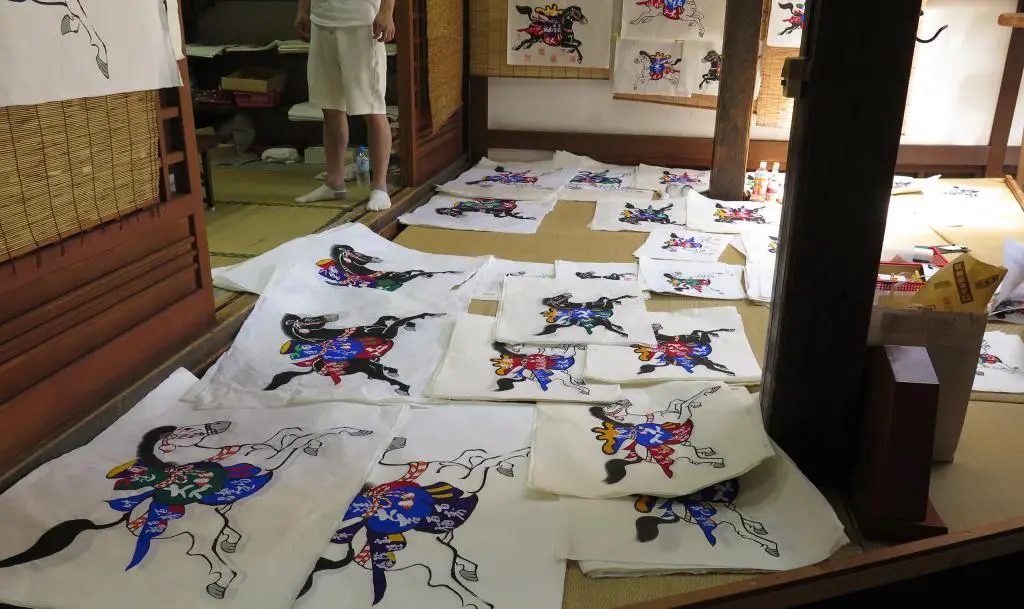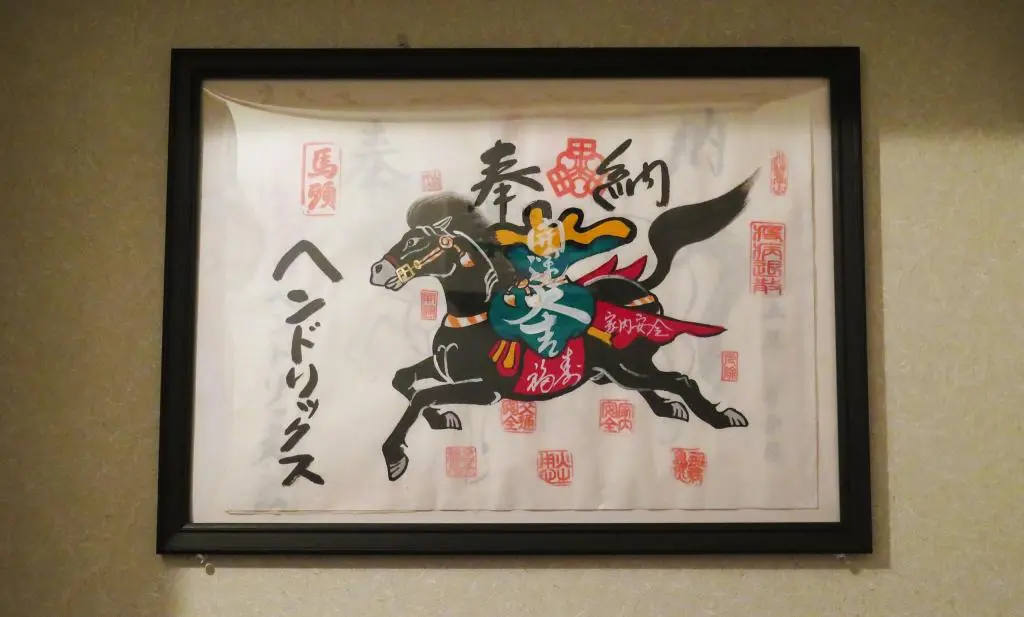Ema 絵馬 are horse paintings created at the height of summer in Takayama. People have these paintings created to bring luck and protection to a person's family or business through the upcoming year. This tradition began several hundred years ago, when farmers would bring their horses to the Matsukura Kannon Temple 松倉観音 on nearby Matsukura mountain to pray to Kannon for their protection.
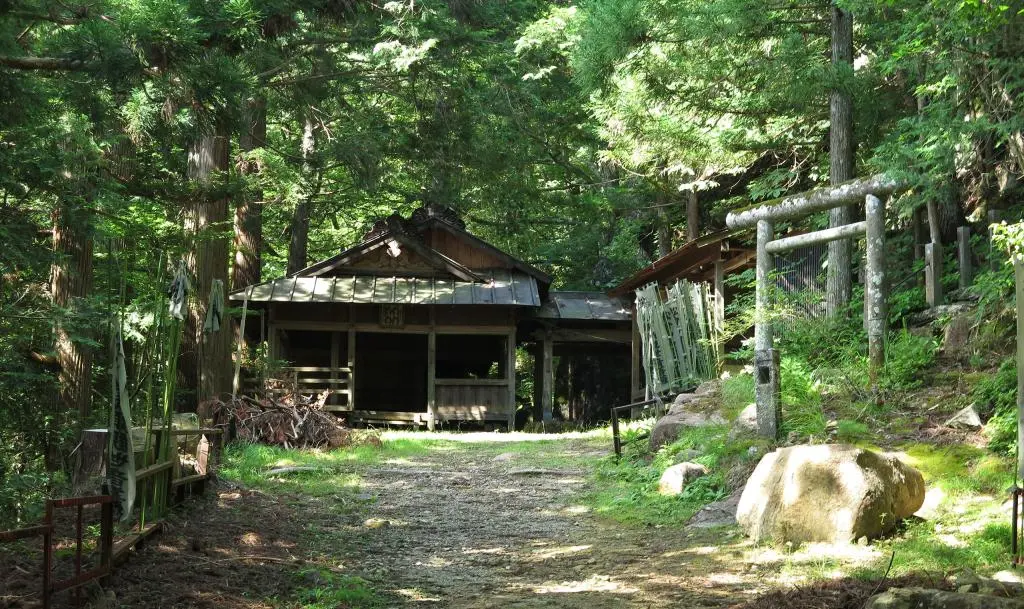
The Matsukura Kannon Temple was first established in the 1690s by a Buddhist Monk named Tenden Koutou 天電高幢. Kannon is a Buddhist with six transformations, and the Matsukura Temple specifically worships Bato Kannon 馬頭観音, the horse-headed transformation of Kannon.
Traditionally, the Hida region has been populated by farmers, so horses were a very important part of their lives. They were used in their farm work for cultivating their fields and transporting food to town. They were also needed to travel the long distance up north or down south. People considered them part of their family. As such, their stables were connected to their houses at the front door.
Each year on July 9th, people would bring their horses to the Matsukura Temple to have their horse blessed by the monks of Bato Kannon. 400 years ago, traveling up the Matsukura mountain to reach the temple was difficult, and horses were often injured. As the custom grew in popularity, it became even more troublesome to bring horses up the mountain.
Because of this, Emas 絵馬 were created. Rather than bringing your physical horse up the mountain, you could buy a painting of your horse, have the monks bless the painting, and receive the same protection and fortune. People would hang the painting near their front door, near their horse's stable. Over time, these paintings have come to represent general good luck. As the horse faces inwards, it would bring you good luck to your home or business.
In previous years, I've gone up the Matsukura mountain to visit the Kannon Temple and get a horse painting. But, that's not the only place that makes these paintings.
Yamazakura Shrine is a small shrine on Honmachi street, one of the main streets in Takayama. It is squished between two restaurants. Despite being centrally located, it's perhaps more annoying to reach than the Kannon Temple on the mountain because there's no parking (for free) around the area. Although old people just park in the middle of the street anyway.
Yamazakura Shrine is named after a local horse that became a legend. Yamazakura 山桜 was born in the town of Nyukawa (NE town of Takayama) and became the horse of Kanamori Yorinao 金森頼直, the reigning ruler of Takayama at the time, great grandson of Kanamori Nagachika 金森長近, who established modern Takayama. Yorinao was in Edo when the Great Fire of Edo happened in 1657. Yorinao was completely engulfed in flames in his guest house. The story goes that Yamazakura burst through the door allowing Yorinao to get on his back. The horse rushed out of the building and leaped into the river extinguishing the flames saving his life.
Yorinao was so grateful to his horse. He established the horse's stable in downtown Takayama on Honmachi street so the people of Takayama would look after him and treat him with respect. After Yamazakura's death, he was cremated and ashes spread at the foot of Mt. Matsukura on the path to the Kannon Temple. At the location of the stable, Yamazakura Shrine 山桜神社 was established. Besides praying to Bato Kannon for protection and prosperity, the shrine specializes in protection from fire.
Every year, the Yamazakura Shrine advertises in the town newsletter and I often see these advertisements around the shrine when I drive by. Rather than go to Matsukura Kannon, I wanted to visit a different Ema distributer this year.
Yamazakura and Bato Kannon are celebrated on August 8th, 9th, and 10th each year at the Yamazakura shrine, but the shrine is open from August 1st to 10th at 10am to 3pm each day. I had time to visit on August 7th before class in the evening. You're able to make an order online prior to visiting. But, if you just show up, they don't have a standard order form, like the Kannon temple. You just tell them your name, the Ema size, what color (black/white), and which way it should face (left/right). The small painting was 1800yen.
Because the shrine is so small, they only let a few people in at a time.
There are a few different designs beyond just the color of the horse, I think for different luck. I just went with the green one because it looked pretty and unconventional.
Again, because the shrine is so narrow and demand is somewhat high, I had to wait outside for them to finish painting my name, blessing, and stamping all the protections on the painting. I didn't have to wait too long, though.
They didn't write the date on the painting, which was common with the Ema from Matsukura Kannon. But! My luck has been renewed for yet another year. This time with extra fire protection.

